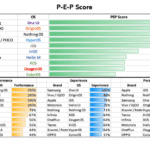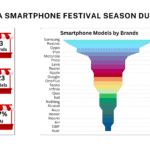Whether we like it or not, premium brands are essentially defined by pricing. It is equally important for premium brands to convince customers to pay more for the products or services offered as it may sound for a novice brand.
A decade ago, when digital was not the mainstream, building trust was more important for services as products could speak for themselves and it was easier for customers to perceive the quality and performance of a product. But as digital technologies started percolating all through the value chain, the essential building blocks of a product started becoming available to all, narrowing the space to differentiate. At the same time, many products started getting virtualised. Perhaps building trust was never this significant as it is right now!
While one can understand that there is a price to own a brand or its association as a customer; and it is for this association or ownership a customer is ready to pay a premium. But many a times, we find it intriguing that there is a set of customers ready to pay whatever is demanded by a brand. Examples like Apple, Mercedes, Louis Vuitton, Tag Heuer are among many such names where a customer pays for what is demanded by the brand. So how come have these brands built this reputation that the customers do not bargain and willingly pay the premium asked?
Undoubtedly there is an enhancement in the socio-economic profile of a customer by possession of such brands. This comes against a premium value charged by the brands over and above the cost and profits that otherwise determine the pricing. But over and above this, there is a big trust factor that these brands have earned making them a premium brand.
The premium brands have a strong emphasis on quality, which again is an attribute helping establish the trust. The brands invest heavily in R&D, quality control, servicing, and other key functions only to create a trustworthy relationship between customers and themselves. We recently saw how the opening of two Apple Stores was warmly received by its customers and enthusiast in India. The customers buying Apple products trust it end-to-end! They trust that the products are going to exactly deliver what they promise. They trust that the materials being used in them are superior. They trust that the after-sale support and servicing will be up to mark. So is the case with other premium brands.
Building a premium brand in the digital arena is one of the most challenging tasks to accomplish. It’s very complex for a digital product, especially a service to build trust through definite attributes so that its customers could perceive it as a trustworthy brand, hence premium. There might be some examples where we find customers have higher level of trust than the competition offerings. For instance, customers of zoom video / web conferencing services, not only prefer it for easy and intuitive interface, but also the trust they have in it. Similarly, there could be very few isolated examples to showcase in the digital arena where the brand noticeably is distinguishable than its competition making it eligible to be a premium brand.
One of the possible ways for digital products to become premium brands is to address brand safety issues and challenges and earn the trust of all the stakeholders. There are numerous and ever-growing brand safety issues that the digital brands are grappling with including the digital infringement. It is only when a customer can feel secure and trust a digital product that it could start perceiving it a premium brand. Otherwise, if the customers keep on facing issues like inappropriate brand associations, awkward brand appearances, data breach and fraud, the brand stands no chance to become premium.
Digital brands will have to work holistically covering its offerings as well as the assets that build its image and reputation to create a safe image, earn trust and tread towards becoming a premium brand. There cannot be a disconnect where the product meets highest quality control standards but the brand assets like its website, e-shop, social media channels and even advertisements and content do not undergo any quality checks to build a holistic and inter-related seamless trust equation.
In India, very digitally evolved brands have started focusing on the brand safety. However, there is a long way to go. Not only do they require brand safety, but every single entity, irrespective of its business scale, operations and industry, has to create a safe environment for building the stakeholder trust.
The balance sheets and other performance reports of several businesses have shown that as we embark more on the digital journey and virtualise offerings, creating a premium brand might be one of the best strategies to create sustainable businesses. Apple is one such example in front of us. Now if you are a digital brand custodian and want to create a sustainable brand, think about brand safety today. Do not take it as an optional or an add-on task. It is an investment that helps in building a premium brand. With the access to technology on the rise and emergence of ultra-intelligent technologies like AI, etc., differentiating and earning a competitive edge will be one of the major challenges that businesses are going to witness in times to come. The only way to overcome it is to build trust, and if the orientation allows, creating a premium brand.





